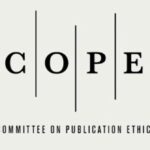Fadel Rahim Ali Khazraji and Husham Naji Hameed
Department of Life Sciences, College of Education, Samarra University
Received: Nov 27, 2022/ Revised: Dec 20, 2022/ Accepted: Dec 22, 2022
Abstract
The results of the study on tomato cultivars (AMWAJ, NOUN, MAESTRO, BAYAN) in tomato fields located in the Dujail region of Salah al-Din governorate showed that insect predators were present in abundance in the tomato crop, as the average number of pests for the cultivar was in the two regions Dujail1 and Dujail2 (the average is the larvae of the predator), 7.46, 6.75, and 6.39, respectively. As for the (average of predatory animals), they were 21, 5.29, 4.56, and 3.23, respectively.
Keywords: Predator, cultivar, Tomato, predatory animals
References
Abdel-Rahman, S. A. and Al-Rubaie, J. K. (2012). Studying the effect of differences in the numbers of nymphs of black bacillus on the live performance of the predator, the green aphid lion. Department of Plant Protection – College of Agriculture – University of Baghdad. Iraqi Journal of Agricultural Sciences. 34(3) (special issue): 20-25.
Al-Issa, Z., Tracy, A. N. and Al-Buhsini, M. (2017). Activity of the fungus Beauveria bassiana (Balsamo) Vuillemin.
Al-Jassani, R. F. and Muhammad, S. M. (2017). A study of the susceptibility of some local watermelon cultivars to sap-sucking insects and their association with insect predators. Journal of Plant Protection, 35(3) 170-164.
Al-Khazraji, N. K. E. (2020). Evaluation of some agricultural applications in controlling watermelon wilt disease caused by Fusarium oxysporum and Macrophomina phaseolina. Master Thesis. faculty of Agriculture. Tikrit University.
Al-Qahtani, J. B. S. (2009) Jaber Encyclopedia of Herbal Medicine. Obeikan Library. Riyadh. p320.
Al-Rawi, K. M. and Abdulaziz, M. K. (1980). Design and analysis of agricultural experiments. Dar Al-Kutub for printing and publishing, University of Mosul.
Al-Taie, H. S. A. (2010). Studying the effectiveness of the predator (Chrysopidae) Neuroptera (Chrysopidae) Chrysoperla carnea (Stephens) in controlling an insect of the aphid (Homoptera: Aphididae) Brevicoryne brassicae L. By analogy with a pyrethroid insecticide. PhD thesis / College of Science / University of Baghdad.
Atlihan, R., Kaydan, B. and Özgökçe, M. S. (2004). Feeding activity and life history characteristics of general istpredat or, Chrysoper lacarnea (Neuroptera: Chrysopidae), at different prey densities.J.Pest Sci.,77:17-21.
Borges, L. R. and Lazzari, S. M. N. (2008). Flutuação populacional de Gyropsylla spegazziniana (Lizer Y Trelles) (Hemiptera: Psyllidae) em dois sistemas de cultivo de erva-mate, Ilex paraguariensis A. ST. – Hill (Aquifoliaceae). Floresta 38: 325–330.
Bouagga, S., Urbaneja, A. and Pérez-Hedo, M. (2018). Comparative biocontrol potential of three predatory mirids when preying on sweet pepper key pests. Biological Control. 121: 168-174.
Boulhout, H. (2013). Contribution to the phytosanitary monitoring of tomato under greenhouse in the wilaya of Tipaza., Master’s thesis. Abderrahmane University, Mira. Bejaia. P80.
Calvo, F. J., Bolckmans, K., Belda, J. E. (2012). Release rate for a pre-plant application of Nesidiocoris tenuis for Bemisia tabaci control in tomato. Biocontrol 57: 809-817.
Castañé, C., Arnó, J., Gabarra, R. and Alomar, O. (2011). Plant damage to vegetable crops by zoophytophagous mirid predators. Biological control. 59: 22-29.
Desneux, N., Wajnberg, E., Wyckhuys, K. A. G., Burgio, G., Arpala, S., Narváez-Vásquez, C. A., González-Cabrera, J., Ruescas, D. C., Tabone, E., Frandon, J., Pizzol, J., Poncet, C., Cabello, T. and Urbaneja, A. (2010). Biological invasion of European tomato crops by Tuta absoluta: ecology, geographic expansion, and prospects for biological control. Journal of Pest Science. 83:197-215.
Ghahari, H., Hayat, R., Tabari, M., & Ostovan, H. (2008). Hover flies (Diptera: Syrphidae) from rice fields and around grasslands of northern Iran. Munis entomology and zoology, 3(1), 275-284.
Hamad, B. S., & Al–Rawy, M. A. (2008). The influence of prey density on the numerical response of Chrysoperla mutata MacLachlan. Baghdad Science Journal, 5(1).
Holling, C. S. (1965). The functional response of predators to prey density and its role in mimicry and population regulation. The Memoirs of the Entomological Society of Canada, 97(S45), 5-60.
Huwaidi, A., Abd al-Aziz, F. and Farag, M. H. (2013). Tomato cultivation and production, Guidance Bulletin No. 1294, Central Administration for Agricultural Extension, Ministry of Agriculture and Land Reclamation, Arab Republic of Egypt.
Kim, J. G., Lee, W. H., Yu, Y. M., Yasunaga-Aoki, C., Yasunaga, C., Aoki, C., & Jung, S. H. (2016). Lifecycle, biology, and descriptions of greenhouse biological control agent, Nesidiocoris tenuis (Reuter, 1895) (Hemiptera: Miridae).
Mengual, X., Ruiz, C., Rojo, S., Stahls, G., & Thompson, F. C. (2009). A conspectus of the flower fly genus Allograpta (Diptera: Syrphidae) with description of a new subgenus and species. Zootaxa.
Ministry of Planning, (2021). Production of secondary crops and vegetables by governorates for the year 2020, Central Statistical Bureau, Directorate of Agricultural Statistics, p. 37.
Murdoch, W. W., & Oaten, A. (1975). Predation and population stability. In Advances in ecological research (Vol. 9, pp. 1-131). Academic Press.
de Oliveira, M. R., Amancio, E., Laumann, R. A., & Gomes, L. D. O. (2003). Natural enemies of Bemisia tabaci (Gennadius) B biotype and Trialeurodes vaporariorum (westwood)(Hemiptera: Aleyrodidae) in Brasília, Brazil. Neotropical Entomology, 32, 151-154.
Resende, A. L., Silva, E. E., Silva, V. B., Ribeiro, R. L., Guerra, J. G., & Aguiar-Menezes, E. L. (2006). Primeiro registro de Lipaphis pseudobrassicae Davis (Hemiptera: Aphididae) e sua associação com insetos predadores, parasitóides e formigas em couve (Cruciferae) no Brasil. Neotropical Entomology, 35, 551-555.
Sanchez, J. A. (2008). Zoophytophagy in the plantbug Nesidiocoris tenuis. Agricultural and Forest Entomology, 10(2), 75-80.
Shaban, A., & Al-Mallah, N. M. (1993). Pesticides Dar Al Kutub for printing and publishing. University of Al Mosul.
Yuksel, S. (1992). The effectiveness of Chrysoperla carnea (Stephens) (Neuroptera, Chrysopidae) as a predator on cotton aphid Aphis gossypii Glov. (Homoptera, Aphididae). Proc. Second Turkish Nat. Congr. Entomol., 209-216.
How to cite this article
Ali Khazraji, F. R. and Hameed, H. N. (2022). Estimation of the numerical number of some insect predators on four tomato cultivars. Chemical and Environmental Science Archives, Vol. 2(4), 40-45. https://doi.org/10.47587/CESA.2022.2402
License Article Metadata
This work is licensed under a Creative Commons Attribution 4.0 International License.
![]()












